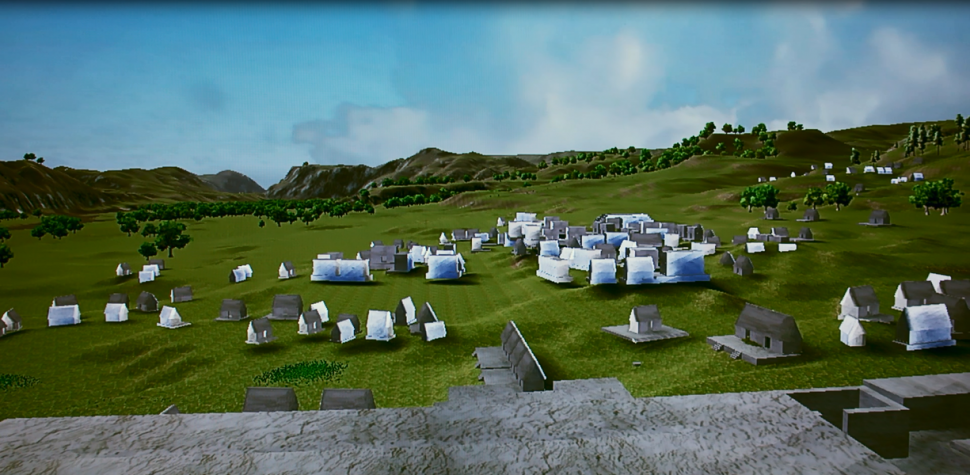John Tolley, October 14, 2017
You?re walking down a white stucco road, a sacbe, approaching a marvelous city. As you near, you hear the sound of drumbeats; a ceremony is taking place in the city?s central temple. Along the way you notice elaborate architecture of the buildings, the careful symmetry, the sculptures, the elaborate mosaics. This is the Mayan city of Copán, circa 600 C.E., brought to you by the magic of virtual reality.
?VR provides this sort of window to the past,? says Heather Richards-Rissetto, Assistant Professor of Anthropology at the University of Nebraska-Lincoln.
Richards-Rissetto is leading a team that is creating an immersive 3D experience, the MayaCityBuilder project, that will allow visitors to walk the streets of this Mayan capitol during the peak of its power. ?In a sense, you?re walking in the footsteps of an ancient Maya person.?
Copán, a UNESCO World Heritage site, was the capital city of a southeastern Mayan kingdom, which sat on the outskirts of the empire, in what is now Honduras. Because of its location, it was a cultural crossroads. There the Maya interacted with other peoples, such as the Isthmo-Colombians, and traded with other empires.
This is precisely what attracted Richards-Rissetto to the site. ?I?m an archaeologist, so I?m interested in bringing the past to light, in particular in ancient Mesoamerica. I?m interested in how these cities were designed and organized and how people interacted with them. Using traditional 2D tools is insufficient in order to bring to light what the ancient Maya were doing.?
To bring Copán to life, the team used a variety of technologies, including geospatial and 3D mapping software, which gives the data, collected on site, a spatial reference point. Airborne LiDAR, photogrammetry and laser scanning performed at the ruins allowed them to collect not just information on individual buildings and roadways, but entire landscapes. They were able to digitally peel away vegetation and reveal covered over surfaces as they would have appeared over a thousand years ago.
What they found was astounding. Much like cities of today, Copán boasted an impressive infrastructure, with features such as an impressive water management system. The team also uncovered interesting insights into how the construction of the city reflected social structure. The positioning of buildings like the ruler?s temple in relation to the dwellings of elites and commoners were likely chosen to send subtle messages about power structures.
?60 percent of the non-elites could see the royal temple versus 95 percent of the elites,? notes Richards-Rissetto. ?If the ruler is targeting the elites, perhaps there?s some kind of dissent. He needs to remind you on a daily basis that he?s the ruler, don?t vie for power.?
For Graham Goodwin, a master?s anthropology student at UNL and project assistant on the MayaCityBuilder, the anachronistic aspects of creating a 3D VR experience for a Mayan ruin present the public a rare look at the realities of his discipline.
?I think it?s very interesting that we?re using tools that are very modern and futuristic to study an ancient period in history,? Goodwin remarks. ?I think it goes against the public perception of what archaeologists do.?
The long term goal of MayaCityBuilder is to create a ?procedural modeling kit? that will allow researchers around the world to construct their own digital reproductions of Mayan cityscapes as well as add to the Copán model. A database will provide future archaeologist with 2D and 3D images from the Copán site in order to build accurate VR experiences.
?We?ve been focusing on creating web-based 3D tools, using open source technologies,? Richards-Rissetto says. ?These tools allow researchers to come together, bring their data together, and make much more in-depth, stronger research. It really creates this sense of collaboration across the globe.?







